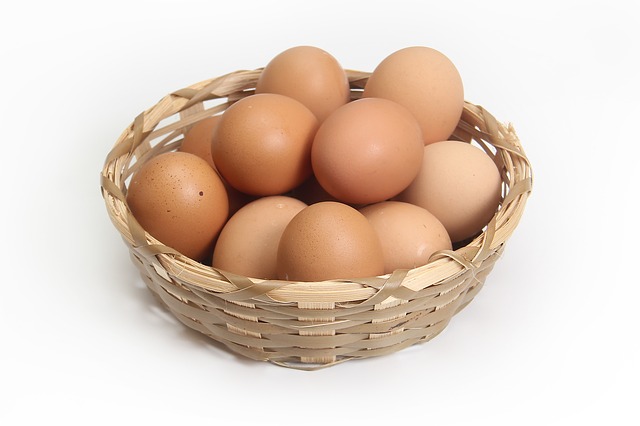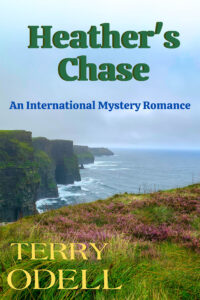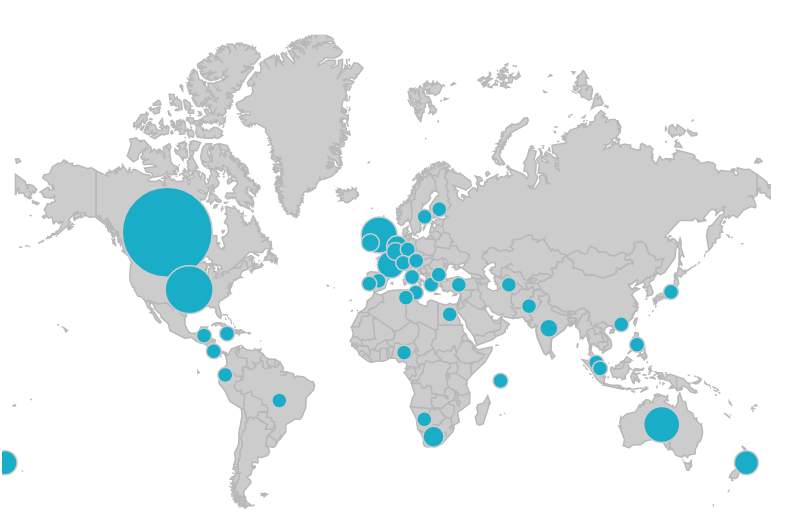Going Wide–or Don’t Put All Your Eggs In One Basket.
Terry Odell

Image by Varintorn Kantawong from Pixabay
Garry had an excellent post going into great depth for using Amazon to self publish, tips that are useful for anyone putting their own books out there. I use Amazon, and it makes up a strong percentage of my writing income, but I’m a strong proponent of going wide. For me, it’s about people, and not everyone shops Amazon, especially internationally. I’ve reached readers in countries I’ve never heard of via Kobo’s platform. (Not that geography was ever my strong suit.)
Another perk of going wide is being able to set your book’s price to free at any time. I’ve found offering first in series free for several of my series is an excellent way to attract readers and drive them to the rest of the books. Amazon will price match–maybe, but it often takes some effort. Plus, as I understand it, the KDP Select TOS say you can’t distribute enrolled ebooks for free, so giving them away via services like BookFunnel, etc., as reader magnets or rewards is off the table. Many readers who subscribe to Kindle Unlimited are the sort who want lots of books at little or no cost, and I prefer to attract readers who are willing to pay for books, not wait for free days. However, going wide opens the door for other subscription services such as Scribd or Kobo Plus.
First, my personal history. When I started writing, which wasn’t all that long ago, I was with digital publishers. There was no Amazon, so each publisher had its own website with its own store. Digital publishing got its push with Ellora’s Cave, because they published erotica (which they called “romantica”). Privacy was a huge selling point. Readers could buy books on line and read them on their PDAs. (Yes, it was that long ago.)
Then, Amazon came into the mix, and digital publishing took off. For all practical purposes, they were now the “only” game in town, and when my traditional publisher remaindered my first book, it seemed reasonable to give Amazon a try. I wasn’t a huge name, so sales weren’t great, but it was a new way to reach readers with ebooks, since the publisher printed only in hard cover and targeted libraries, not bookstores. There was no monetary investment, so I had nothing to lose.
As I recall, Smashwords appeared shortly thereafter, and Barnes & Noble was next on the digital scene. I added them to my distribution channels. Amazon had just started its “Select” program requiring 90-day exclusivity, and I didn’t want to play that game. (Note: I still don’t.) When Nook came out with its now defunct “Nook First” program, I was in the right place with a new release, and gave them 30-day exclusivity. In return, my book appeared on their home page for a week, and emails promoting my book were sent to anyone who owned a Nook or had bought any of my books. I recall the Hubster saying, “Hey, Barnes & Noble just told me to buy your book,” and my daughter-in-law saying someone at work came up to her and asked if she was related to the author. I made $20,000 that month from Nook sales (and had to give back most of my Social Security and hire a tax guy).
As more channels opened, I added all my titles to each. So, that’s my publishing history. Back then, the technical aspects of getting books formatted was more challenging, but I figured it out, and if I can do it, anyone should be able to, especially now. Some basics are formatting in TNR, 12 point font, 1 inch margins all around and use a paragraph style for indenting, NOT TABS. EVER.
(Note: as more and more e-readers have come out, the end-user has control over things like fonts, etc., so there’s no need to get fancy with formatting. Stick to the recommendations.)
Now, it’s SO much easier. If you’re not comfortable with formatting, Draft2Digital will take your word doc and format it for you. All you really need to start is the doc file (they take docx, rtf, and epub as well). In their words, “If Word can read it, we can, too.” They also give you a choice of “decorations” for chapter headings and scene breaks, as well as drop caps if you want them, or other ‘start of chapter/scene’ options. (But not if you give them an epub.)
 (Another note: I don’t justify my digital files because when you up the font, as many readers do, you get huge ugly gaps of white space. Kindle automatically justifies the file. I do justify my print format.)
(Another note: I don’t justify my digital files because when you up the font, as many readers do, you get huge ugly gaps of white space. Kindle automatically justifies the file. I do justify my print format.)
D2D will also create front and back matter, including an “also by the author” page that sends people to Books2Read, a link to a choice of bookstores for the reader. I first used D2D when they were new and the only way to get to Apple without a Mac, but they also distribute to places like Hoopla, Scribd, Tolino, 24 Symbols, and Bibliotheca and OverDrive for libraries.
As digital has grown, so has conversion software, because the better the book looks, and the easier it is to use the channel’s site, the more money you both will make. However, the former author relations guy at Kobo said D2D had the best conversion software out there, and he used them to make his epubs to put up at Kobo.
I go direct to Nook, Kobo, and Kindle and Smashwords because there are some perks available, such as promotion opportunities, discount coupon offers to readers, but D2D will distribute to those channels if you want. I use the epub file that D2D provides (no charge—you can download their epub and mobi formats and don’t even have to publish your book with them.) I’ve used them to create reader magnets for giveaways. I can use that file at Kobo, Nook, Kindle, and Smashwords. Again, the easier the interface is to use, the more likely authors will publish, so following directions at each of the channels is all you need to do. They’re all (of course) slightly different, but if I can figure out where to put the information, anyone should be able to.

Image by Terri Cnudde from Pixabay
It took me longer to establish a readership at the other channels, but now that I have it, I don’t want to lose them. They’re the frosting on my royalty cake. Plus, if Amazon sales sag, the other channels help make up for it.
For the record, I’m a Nook book-buyer, so if a book is exclusive to Amazon, it’s not likely I’ll buy it. Yes, I have the Kindle app, but I prefer the user interface on my Nook. About the only Kindle books I “buy” are the Prime freebies each month, and many months, not even those. Yes, as an author, I make more money selling at Amazon, but exclusivity rubs me the wrong way. My take: The more power we give Amazon, the more they can change the rules to suit their game. This means that if they decide to end Kindle Unlimited, which they could, you’ll have to start from scratch building a wide readership. Putting all my eggs in one basket doesn’t work for me.
You do what works for you, and since I’m retired and don’t need to put food on the table with my book earnings, I prefer to reach more people who will buy my books, not make the most money possible. I write because I can’t imagine not writing.
Questions? Experiences to share? The floor is open.
 My new Mystery Romance, Heather’s Chase, is now available at most e-book channels. and in print from Amazon.
My new Mystery Romance, Heather’s Chase, is now available at most e-book channels. and in print from Amazon.
Terry Odell is an award-winning author of Mystery and Romantic Suspense, although she prefers to think of them all as “Mysteries with Relationships.” Follow her on Facebook and Twitter.


Terry, it seems to me this debate boils down to the philosophical versus the financial. Proponents of going wide come at it philosophically, as you do. E.g., I prefer to reach more people who will buy my books, not make the most money possible and Amazon…exclusivity rubs me the wrong way.
Those who go exclusive come at it from the other side. They want to maximize income at the same time they are building a loyal readership.
After being wide for several years, and hoping iBooks would take off and Nook continue to grow (both of which have not happened), I moved all my fiction to KDP Select. The result is that my annual income from KENP is triple what I made on Nook, Kobo, and iBooks combined. As more and more readers move to the subscription model, with Amazon Prime as the leader, this will likely continue.
There is no wrong answer here. If your motivation is philosophical, go wide. If financial, you may want to consider—and test—exclusivity.
I figured you’d be chiming in, Mr. Bell. Philosophical or not, it twists my knickers to give Amazon that much power.
Also, a lot depends on genre. Romance readers, for example, are voracious readers, and a subscription model works for them.
The only ‘right’ is what works for you.
Enormously helpful, Terry. Thanks!
Like you, I’m opposed to monopolies. Early on, I was stuck with exclusivity but recently got my rights reverted. Now I have no excuse not to go wide…except laziness!
Your post is nudging me over the edge.
What about paperbacks? Who’s your supplier?
Given that 95% of my book sales are digital, I use Amazon to supply paperbacks. The main reason I put them in print is that my mom refuses to use an e-reader. After that, it’s to have print copies for conferences where you can sign books, etc., but that’s gone by the wayside for now. I also use them for contests and giveaways.
I’ve done one print via Barnes & Nobel, and checked out D2D’s print options, but I found that I’d have to charge more for my paperbacks if I used them. As it is, I set my print prices as low as possible, because my real print competition is MMBP.
Thanks, Terry.
A surprisingly large number (25-33%) of my readers are print books only. Plus the local indie bookstore is wonderful about stocking my books. KDP has been good quality, reasonably priced, and decent delivery time.
I agree. I had issues with cover color from KDP once, but they agreed the error was on their end and sent replacements (without asking for the defective ones back). I think everything revolves around knowing your readers. Where I live, the “indie bookstore” is a 3 shelf bookcase at the local grocery store, and they deal only in traditionally published big name authors.
Great overview of this important topic for Indies, Terry.
Personally, I started with Amazon exclusive (KDP Select), and the results and ease of use are too powerful for me to change. For now.
I have no problem with exclusivity. I only use Macs, I only wear Dr. Scholl’s compression socks, and I only swim in Speedos. 😉
But hey, as my book list grows, I’ll consider going wide.
P.S. Finally figured out your “MMPB” acronym (mass market paperback). Do those still exist?
Glad you’re having success, Harald.
And yes, you can still buy mass market paperbacks. I do.
I am cereal-ly looking at the indie route after having a publisher accept a novel, then sitting on it for, well, a long time without publishing. (I made another deal, giving them a story idea in exchange for not having to pay back the advance.)
I’ve begun to ask various writer friends their opinion on whether or not I would hurt my chances with having work accepted by publishing companies if I were to publish independently. So far, the answer seems to be that, it’s difficult to say.
Any advice?
I appreciate this posting, Terri. It goes well with Garry’s.
There are a LOT of hybrid authors out there, Jim, who have traditionally published works as well as indie. A lot would depend on your publishing contract. I know when I started with little digital publishers, I was still trying to go the traditional route (as I mentioned in my post, this was pre-Amazon Kindle), and I knew they’d never pick up book 2 in a series, so I was trying new series and a stand alone. If the book you’re submitting to publishers is very different from indie titles, I don’t think it would have a negative impact. For me, rights reverted on all my published titles, so I was free to put them wherever I wanted.
My logic says if you have a book doing very well as an indie title, a publisher wouldn’t have any issues with you submitting a different work to them, but I’ll be the first to say I’m so far out of the loop with traditional publishing now, you’d do better to ask a hybrid author. I did have an editor from one publishing house ask to see anything new I’d written, so I guess the answer is “It depends.”
And, honestly from what little I’ve seen from agents and publishers, they’re having a lot of trouble figuring out where the market is going.
Thank you. I appreciate your advice. Clears my head a lot.
Glad to help. Just remember I’m a sample size of 1.
Thanks, Terry, for the great information. Copied and pasted for further study…
🙂
Hi Terry,
This is great rundown of going wide. I originally published my first two urban fantasy novels in Kindle Unlimited back in early 2017, along with a prequel novella. My series wasn’t centered on the reader bullseye of urban fantasy, so not the best fit for KU.
I did fine for a newbie, managing to just break four figures in income each of the first three months, but then things dropped off. Amazon did some major behind the scenes tweaking of KU, and myself and a number of fellow authors felt the impact.
Being exclusive had always niggled at me, and I decided to go wide that summer. There were seven weeks between when I could publish Book 1 wide and when Book 2 was out of KU. Once that happened, I had the preorder up for Book 3. I landed a BookBub featured deal the following year–three actually, and that made 2018 the best year I’ve had so far.
Wide is a different pace than publishing in KU. Book launches have less drama, and obsessing on sales rank pointless, as David Gaughran has emphasized, so more relaxed. I love working with in house promotion at Kobo and Barnes and Noble.
I will say that in 2020 Kindle Unlimited and Wide are two different readerships with minimal overlap, and that it’s best to be all in with one or the other, so that readers in either “universe” can find all of your works to buy/borrow and enjoy.
Now, I’m writing mysteries, a library cozy series (putting my thirty plus years of library experience to use 🙂 and a couple of author friends have advised me to publish into KU first.
Another new cozy writer reached out to me, and said she’s torn about doing the same (she had been writing YA dystopia, so cozies are quite a change). She noted that “80% of revenue with cozies” comes from KU, so she’s trying to decide whether or not to publish in KU first.
One thing I learned with taking my urban fantasy novels wide is that there’s an audience for those elsewhere. I strongly suspect the same is true for mysteries, cozy or otherwise. Like you, I love being wide. If I publish the mysteries under my own name, then that’s more reason to go wide. I don’t need the money to keep a roof over my head, I need it to keep my publishing going. Sales mean readers, and that’s the whole point of the author biz for me–building and sustaining a readership. Wide is a great way to do that.
Thanks again for an informative post!
And thanks for your input about your experiences, Dale. Each of us has a different story, a different approach, and different reasons for choosing their paths.
With KU, I believe it works best if you have a large body of work available, and can crank out new books every few months. That’s not my pace. A reader friend of my experimented by putting one of her books in KU, and it garnered her next to nothing–probably because it was only one book, and many/most (?) KU readers don’t leave the system to buy more by an author if they’re not in the program. A generalization with exceptions, I know, but something to consider.
Thank you! I’ve seen others experiment like your friend, also to little to no result. My writing pace is slower–I’d like to be faster, but only if it’s not more stressful, nor compromise quality.
In the end, I suspect I’ll publish my mysteries wide when the time comes. I just like the waters there better 🙂
Happy sailing.
Great article, Terry.
The word “exclusivity” gives me chills. Amazon can choose to change the rules at any time once they’re the only game in town. After having published my first novel with a traditional publisher, I’m going indie wide with my second book.
Having said that, I realize I’m in the “philosophical” category. My goals as a writer are not to make a lot of money but rather to reach a lot of people with books that are thoughtful and worth reading.
As far as formatting, I just purchased Vellum to format my book into epub and mobi and I’m very happy with the ease of use and the good looking result.
Thanks, Kay. I’ve heard good things about Vellum, but as I recall, it’s only available for Macs, and has a significant price tag, but that’s all relative. So far, I’m happy with the way D2D converts my simple Word docs.
I think my writing/publishing philosophy can be summed up with something that happened long ago when there was a sales channel called All Romance eBooks. I’d published with them as part of my wide distribution, but wasn’t seeing results (and their interface was cumbersome), so I decided to skip them for my next release. I got an email from a reader who said, “I only buy from All Romance eBooks. Will your new book be there?”
My reply: “Tomorrow.”
Great piece on going wide, Terry. I grinned when I started reading this… not because you flattered me about the Amazon post… but because I just finished uploading a piece for tomorrow’s Kill Zone post titled “Top Ten Tips on Formatting eBooks from MS Word”.
You nailed it with “Some basics are formatting in TNR, 12 point font, 1 inch margins all around and use a paragraph style for indenting, NOT TABS. EVER.” That is the best basic advice I’ve seen on eBook Formatting 101.
About going wide – best move I’ve made in this biz. I “went wide” on Kobo and Nook this past April. It hasn’t affected my Amazon revenue one bit because I never made anything on KU or KOLL. Nook is slow, but Kobo is a whole different story. I was told it takes about 6 months to get traction on Kobo and it’s true. I just looked at Kobo stats for this month and I’ve sold 230 eBooks in 27 different countries. Canada is the big part followed by the US, UK, and Australia. But, I’ve also sold in places that AZ doesn’t serve like Saudi Arabia, Indonesia, Dominican Republic, Argentina, and the Cocos Islands which is somewhere in the South Pacific 🙂
BTW, that sales map on Kobo is cool!
Love that map, Garry! I look at the list of countries below the map (not in the image I used) and say “where the heck is that?” (Geography isn’t my strong suit, as I said. Never could answer the blue questions in Trivial Pursuit.)
A check of my Canada sales over the last 90 days via Kobo vs Amazon shows I’m making more money at Kobo than Amazon. If I could do the math, I could figure out the % increase, but to me, more is more, and that’s good enough. I’m not ready to lose those readers.
I’m really impressed with Kobo, Terry. Everything about it is first class. Their promotions are creative & inexpensive, their dashboard is excellent, and you can get personal assistance with a quick email. Plus… they don’t hold you hostage like at KDPS.
The one thing I’d like to see regarding Kobo promotions is more of the % off variety rather than price drops, simply because there’s no messing with price matching. They also have a higher minimum payout threshold, but otherwise, they’re very easy to use.